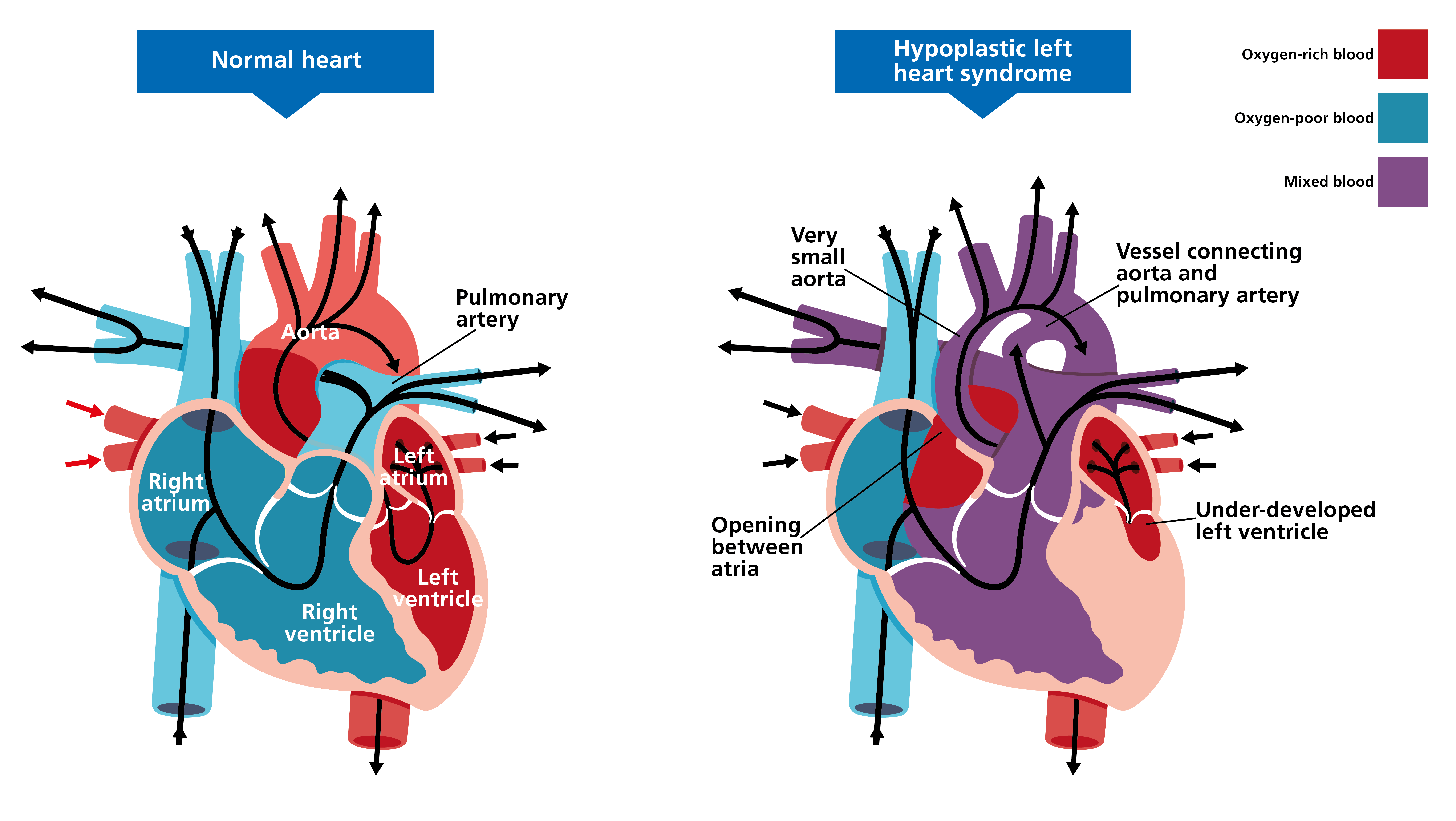Hypoplastic left heart syndrome
Hypoplastic left heart syndrome is a congenital condition in which the left side of the heart is underdeveloped. While in most cases the cause is not known, changes in the GJA1 gene are known to be a cause.
Overview
Hypoplastic left heart syndrome occurs when the left side of the heart is underdeveloped: the mitral and/or aortic valve is narrow or blocked, the left ventricle is underdeveloped, the aorta is small and underdeveloped and there is an atrial septal anomaly.
Figure 1 shows the anatomical variance that occurs.
Figure 1: Hypoplastic left heart syndrome

Clinical features
The clinical features of hypoplastic left heart syndrome are:
- dyspnoea;
- a high-pitched noise during inhalation;
- cyanosis;
- congestive heart failure early in life;
- poor feeding;
- frequent vomiting;
- lethargy; and
- life-threatening complications such as shock and hepatomegaly, which can occur if the condition is left untreated.
The progression and severity of hypoplastic left heart syndrome depends on whether the ductus arteriosus remains patent or not. The ductus arteriosus allows blood to pass from the right ventricle to the aorta, bypassing the left side of the heart. It normally closes soon after birth, but initial treatment in babies with hypoplastic left heart syndrome involves keeping it open until corrective surgical measures can be completed.
Potential genetic causes
While in most children with hypoplastic left heart syndrome the cause is not known, there are some cases that are known to be caused by changes in the GJA1 gene, which lies at Ch6q22, or the NKX2-5 gene, which lies at Ch5q35.1.
Occasionally, hypoplastic left heart syndrome is associated with a diagnosis of Turner syndrome, Noonan syndrome or one of the common trisomies (13, 18 and 21).
Inheritance and genomic counselling
If hypoplastic left heart syndrome is caused by a GJA1 variant, it has an autosomal recessive inheritance pattern. Cases caused by NKX2-5 follow an autosomal dominant inheritance pattern.
The common trisomies and Turner syndrome have around a 1% chance of recurrence.
If a heritable cause of hypoplastic left heart syndrome is suspected, families should be offered genomic counselling to explore their options.
Management
Prostaglandin E1 is given to maintain the patency of the ductus arteriosus before it closes in early life. This allows blood to bypass the problematic left side of the heart.
For the surgical correction of hypoplastic left heart syndrome, there is a three-stage process. This involves a Norwood procedure and a hemi-Fontan procedure followed by a Fontan procedure. The aim is to separate the systemic and pulmonary circulation.
Occasionally, a heart transplant is the recommended treatment for infants.
Genomic counselling is recommended for families with children affected by the condition.
Resources
For clinicians
- NHS England: National Genomic Test Directory
For patients
- British Heart Foundation: Understanding your child’s heart: Hypoplastic left heart syndrome
- Great Ormond Street Hospital for Children NHS Foundation Trust: Hypoplastic left heart syndrome